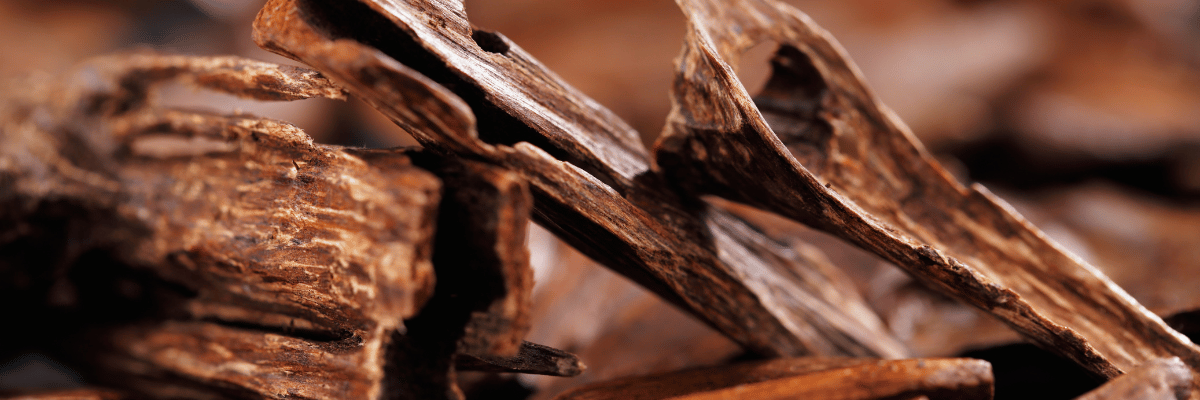
Agarwood Properties, It is often referred as oud, It is highly prized natural resin renowned for its captivating fragrance and diverse properties.
This aromatic treasure has been cherished for centuries, finding its way into various aspects of life, from spirituality to luxury. Let’s delve into the remarkable properties that make agarwood so exceptional.
Agarwood’s most celebrated attribute is its enchanting fragrance. The complexity and depth of its aroma have captivated humans for millennia. From woody and earthy undertones to sweet and floral nuances, agarwood offers a multifaceted olfactory experience. This versatility has made it a cornerstone in perfumery, incense making, and aromatherapy.
Beyond its alluring scent, agarwood has been traditionally used for its potential medicinal benefits. While scientific research is ongoing, historical and anecdotal evidence suggests that agarwood possesses properties that can support overall well-being.
Agarwood holds profound spiritual significance in many cultures. Its association with purity, enlightenment, and connection to the divine has made it an integral part of religious ceremonies and rituals. The calming and uplifting properties of agarwood create a serene atmosphere, fostering meditation and spiritual contemplation.
Due to its rarity, complex formation process, and high demand, agarwood has become a valuable commodity. Its economic importance is evident in the global trade, with countries in Southeast Asia being primary sources. The high price of agarwood reflects its scarcity and the craftsmanship involved in extracting its precious oil.
The growing demand for agarwood has raised concerns about the sustainability of its production. Overharvesting and illegal logging pose significant threats to the environment. It is crucial to support sustainable sourcing practices and choose suppliers who prioritize ethical and responsible methods.
Al Mutalib is committed to sustainable agarwood sourcing and offers high-quality products that respect the environment. Our dedication to preserving this precious resource ensures that future generations can continue to enjoy the benefits of agarwood.
Agarwood, with its captivating fragrance and diverse properties, has found its way into numerous applications across cultures and industries. Let’s explore some of the most common uses of this precious resin:
Agarwood’s versatility and cultural significance have solidified its position as a precious and sought-after commodity. Its applications continue to evolve as research uncovers new properties and innovative uses for this extraordinary natural resource.
The agarwood industry faces a multitude of challenges, from environmental concerns to market volatility. Understanding these obstacles is crucial for industry stakeholders to develop sustainable and profitable strategies.
Climate Change: Climate change affects agarwood tree growth and resin production, posing challenges for cultivation and yield.
Addressing these challenges requires a collaborative effort from governments, industry stakeholders, and consumers to promote sustainable practices, protect the environment, and ensure the long-term viability of the agarwood industry.
Agarwood, with its rich and complex aroma, stands as a cornerstone in the realm of perfumery. Subsequently, perfumers globally have harnessed its captivating essence to create olfactory masterpieces.
Initially, agarwood oil was employed as a standalone fragrance, revered for its depth and intensity. However, perfumers soon recognized the potential of blending agarwood with other notes to craft intricate compositions. Consequently, they began experimenting with various combinations, resulting in a diverse range of oud-based perfumes.
Furthermore, agarwood’s versatility allows it to harmonize with a wide spectrum of fragrance families. Floral, woody, oriental, and even contemporary notes complement agarwood’s character, expanding its olfactory horizons. As a result, perfumers can craft fragrances that cater to diverse tastes and preferences.
Moreover, the art of oud perfumery has evolved over time, incorporating modern techniques and ingredients. Consequently, contemporary perfumers are pushing the boundaries, creating innovative and unexpected oud-based fragrances.
In essence, agarwood’s journey in perfumery is a testament to its enduring appeal and the creativity of fragrance artisans.